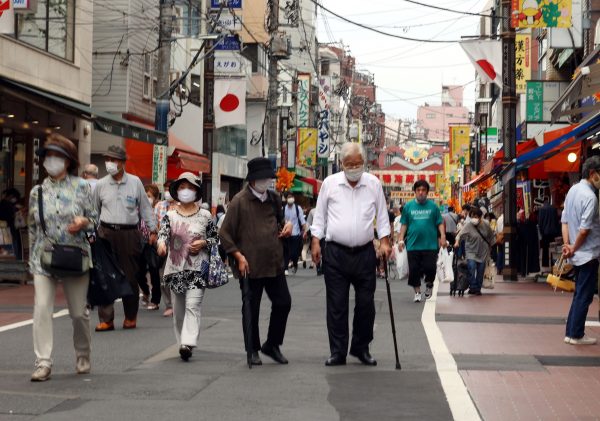‘Generational accounting’ measures the balance between government services (including social security) received and taxes and social insurance premiums paid by each generation. It is estimated that in 2010, the net burden of the 0-year-old generation will be 25 per cent heavier than that of the 90-year-old generation.
In Japan, life expectancy is increasing in parallel with an increase in the elderly population, but there is a bright side to longevity.
There is of course a utility to living longer. In Japan, the median life expectancy of those born in 1980 is 4.2 years longer than the population born in 1950. Those born in 2010 are expected to live 7.4 years longer. If we evaluate the economic welfare of each generation in terms of total lifetime consumption based on actual age-specific consumption data, the economic welfare of those born in 1980 will increase by 9–10 per cent and the economic welfare of those born in 2010 will increase by 9–13 per cent, thanks to longer life expectancy.
There is also a benefit to working for a longer time. Currently after age 65, people start to receive public pensions. The number of people who stop working increases with age. If people worked until the age of 75, paying taxes and social insurance premiums, the primary fiscal balance of Japan’s national and local governments would improve by 6–7 per cent of GDP. If this money is used to reduce the burden on the younger generation, they would be able to enjoy more consumption and the disadvantages facing them under the current social and employment structure would disappear.
If we redefine the ‘elderly’ as those aged 75 years or older, their share of the population would remain unchanged from 27 per cent in 2018 (the share of those 65 and older) to 27 per cent in 2060 (the share of those 75 and older).
The question is whether working until 75 is a realistic possibility. Challenges include the health of workers and where they would work.
First, on the health front, working until 75 is possible if Japan sets the year 2060 as the target year for this change. As life expectancy increases, healthy life expectancy is also expected to increase. By 2060, half of the Japanese population will be able to stay healthy until the age of 80, with the term healthy here referring to having no problems in daily life functioning.
Second, questions remain about whether the elderly will be able to secure a place to work. Japan is still in the process of establishing continuous employment until the age of 65, which will become mandatory in 2025. From April 2021, companies will be obligated to ‘make efforts’ to provide continuous employment until the age of 70.
But the situation will not change just because of this call to action. It can be troublesome for companies to continue hiring the elderly and labour costs will increase. Based on trends in Japan to date, it is estimated that by 2060 continuous employment will only be widely established up to the age of 70 and will not reach the age of 75. Providing recurrent education for middle-aged and older workers to update their skills will be important in ensuring that companies are willing to hire older workers.
It is also politically difficult to raise the starting age for pension payments. Politicians are reluctant to adopt policies that reduce benefits for the elderly if they are opposed by the elderly who have a high voter turnout.
As life expectancy increases, new policy efforts are needed to increase the age of retirement. In line with this, steady and continuous efforts to transform the economy and society will also be needed.
Japan is not the only country with an ageing population. By 2060, the percentage of people aged 65 and over will be 41 per cent in South Korea, 30 per cent in China and 25 per cent in Vietnam. If Japan gets its ageing policy right, the time will soon come when its neighbours seek leadership as they face their own ageing populations.
Sumio Saruyama is Lead Economist at the Japan Center for Economic Research (JCER).
This article is drawn from Sumio Saruyama, Saeko Maeda, Ryo Hasumi and Kazuki Kuroiwa, Intergenerational Equity Under Increasing Longevity, in Adam Triggs and Shujiro Urata (eds), Achieving Inclusive Growth in the Asia Pacific (PAFTAD 2020, ANU Press).

